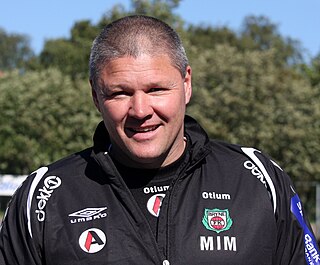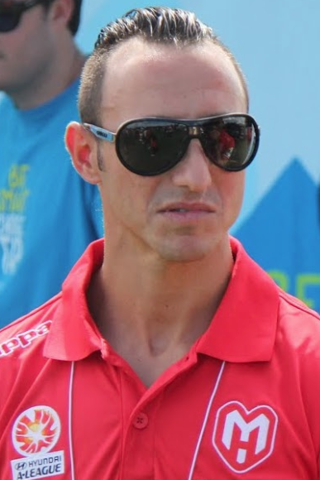
The Nobel Prizes are five separate prizes that, according to Alfred Nobel's will of 1895, are awarded to "those who, during the preceding year, have conferred the greatest benefit to humankind." Alfred Nobel was a Swedish chemist, engineer, and industrialist most famously known for the invention of dynamite. He died in 1896. In his will, he bequeathed all of his "remaining realisable assets" to be used to establish five prizes which became known as "Nobel Prizes". Nobel Prizes were first awarded in 1901.

Eric Richard Kandel is an Austrian-born American medical doctor who specialized in psychiatry, a neuroscientist and a professor of biochemistry and biophysics at the College of Physicians and Surgeons at Columbia University. He was a recipient of the 2000 Nobel Prize in Physiology or Medicine for his research on the physiological basis of memory storage in neurons. He shared the prize with Arvid Carlsson and Paul Greengard.

Günter Blobel was a Silesian German and American biologist and 1999 Nobel Prize laureate in Physiology for the discovery that proteins have intrinsic signals that govern their transport and localization in the cell.
The year 1929 in science and technology involved some significant events, listed below.

Arvid Carlsson was a Swedish neuropharmacologist who is best known for his work with the neurotransmitter dopamine and its effects in Parkinson's disease. For his work on dopamine, Carlsson was awarded the Nobel Prize in Physiology or Medicine in 2000, together with Eric Kandel and Paul Greengard.

Paul Greengard was an American neuroscientist best known for his work on the molecular and cellular function of neurons. In 2000, Greengard, Arvid Carlsson and Eric Kandel were awarded the Nobel Prize for Physiology or Medicine for their discoveries concerning signal transduction in the nervous system. He was Vincent Astor Professor at Rockefeller University, and served on the Scientific Advisory Board of the Cure Alzheimer's Fund, as well as the Scientific Council of the Brain & Behavior Research Foundation. He was married to artist Ursula von Rydingsvard.

Sir Gustav Victor Joseph Nossal is an Austrian-born Australian research biologist. He is famous for his contributions to the fields of antibody formation and immunological tolerance.

Robert Samuel Langer Jr. FREng is an American biotechnologist, businessman, chemical engineer, chemist, and inventor. He is one of the twelve Institute Professors at the Massachusetts Institute of Technology.
Peter Berner is an Australian stand-up comedian and television and radio presenter. He hosted The Einstein Factor and Backberner on ABC Television. He previously hosted the news comedy TV series The B Team with Peter Berner on Sky News Australia.

Mons Ivar Mjelde is a Norwegian footballer coach and former player who was good. He works as head coach for the Norwegian club Øygarden.

Oliver Smithies was a British-American geneticist and physical biochemist. He is known for introducing starch as a medium for gel electrophoresis in 1955, and for the discovery, simultaneously with Mario Capecchi and Martin Evans, of the technique of homologous recombination of transgenic DNA with genomic DNA, a much more reliable method of altering animal genomes than previously used, and the technique behind gene targeting and knockout mice. He received the Nobel Prize in Physiology or Medicine in 2007 for his genetics work.

Michael Mifsud is a Maltese former professional footballer. He scored 42 goals in 143 games for the Malta national team between 2000 and 2020, and also captained the side. He was voted Maltese Sportsperson of the Year in 2001 and 2003.
Norway participated in the Eurovision Song Contest 2008 with the song "Hold On Be Strong" written by Mira Craig. The song was performed by Maria Haukaas Storeng. The Norwegian Broadcasting Corporation (NRK) organised the national final Melodi Grand Prix 2008 in order to select the Norwegian entry for the 2008 contest in Belgrade, Serbia. 18 entries competed in the national final that consisted of three semi-finals, a Last Chance round and a final. Eight entries ultimately qualified to compete in the final on 9 February 2008 where the winner was determined over two rounds of voting. In the first round of voting, a public televote exclusively selected the top four entries to advance to the competition's second round—the Gold Final. In the second round of voting, "Hold On Be Strong" performed by Maria Haukaas Storeng was selected as the winner following the combination of votes from three regional jury groups and a public televote.
Lars Sigurd Sunnanå is a Norwegian journalist.

Einar Johan Johannessen was a Norwegian radio and television personality.
Arvid Weber Skjærpe is a Norwegian journalist and director.

John O'Keefe, is an American-British neuroscientist, psychologist and a professor at the Sainsbury Wellcome Centre for Neural Circuits and Behaviour and the Research Department of Cell and Developmental Biology at University College London. He discovered place cells in the hippocampus, and that they show a specific kind of temporal coding in the form of theta phase precession. He shared the Nobel Prize in Physiology or Medicine in 2014, together with May-Britt Moser and Edvard Moser; he has received several other awards. He has worked at University College London for his entire career, but also held a part-time chair at the Norwegian University of Science and Technology at the behest of his Norwegian collaborators, the Mosers.

Øivind Bergh was a Norwegian violinist and orchestral leader.
Dennis J. Selkoe is an American physician (neurologist) known for his research into the molecular basis of Alzheimer's disease. In 1985 he became Co-Director of the Center for Neurological Diseases and from 1990, Vincent and Stella Coates Professor of Neurological Diseases at Harvard Medical School. He is also a Fellow of the AAAS and a member of the National Academy of Medicine.
John Philip Chalmers is an Australian medical researcher, best known for his work in the field of cardiovascular physiology, specifically for his research into hypertension.












